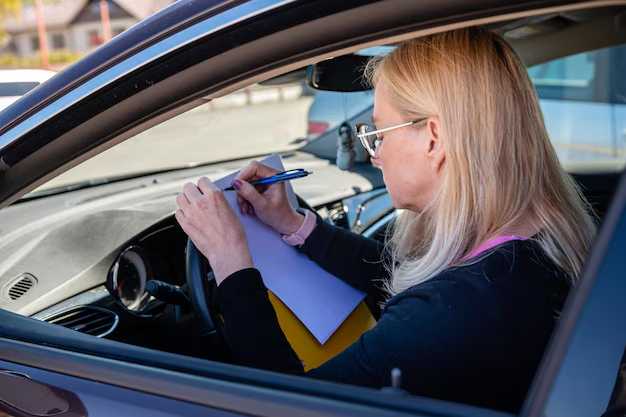Ready to Hit the Road? Navigating Life Post-Cataract Surgery
Experiencing improved vision and a clearer outlook on life can be a joyous outcome of cataract surgery. However, the question frequently arises about when you can return to your regular activities, especially driving. Being one of the most crucial aspects of daily independence, understanding when you're safe to drive after cataract removal is essential. Let's explore various considerations and guidelines surrounding this common concern.
Understanding Cataract Surgery and Recovery
What is Cataract Surgery?
Cataract surgery is a common, routine procedure performed to remove the cloudy lens from the eye, which improves vision and quality of life. The operation generally involves the removal of the lens, followed by the insertion of an artificial one. It's typically an outpatient procedure with a relatively quick recovery time.
Immediate Aftermath
Post-surgery, your eye might feel a bit uncomfortable, and vision can be blurry as you start to heal and adjust to the new lens. It's crucial to give yourself some time to rest and recover properly to avoid complications. Follow your doctor’s post-operative instructions meticulously to ensure a smooth recovery process.
Recovery Timeline
The majority of patients report significant improvements within a few days. However, full healing can take several weeks. Hence, understanding your personal healing timeline is vital before jumping back behind the wheel.
Can You Drive Post-Cataract Surgery?
Doctor's Approval is Key
The first and foremost step towards driving post-surgery is obtaining a green light from your eye doctor. Vision needs to meet specific standards for driving safely. Your ophthalmologist will assess your vision post-operation and advise you on when it's safe to drive again.
General Guidelines
While each patient’s recovery time varies, most can expect to refrain from driving for at least a few days to a week after surgery. Several factors, including the type of surgery, individual healing, and clarity of vision, play a role in determining when driving can be resumed.
Vision Standards for Driving
Most jurisdictions require a minimum visual acuity standard to ensure safe driving. Your vision will be evaluated during follow-up appointments to confirm it meets the necessary criteria.
Factors Influencing the Decision to Drive
Personal Health and Healing
Your overall health can affect recovery. Individuals with pre-existing health issues might experience longer healing times. Additionally, if complications occur, such as infections or inflammation, you might need to delay driving further.
Day vs. Night Driving
Driving conditions can vary significantly between day and night. After cataract surgery, some patients experience changes in night vision or sensitivity to light. If night driving is affected, consider starting with short trips during daylight initially.
Comfort and Confidence
Driving demands both mental and physical preparedness. Even with the clearance from a doctor, evaluate your comfort and confidence level. Begin with brief drives in familiar areas to build assurance.
Preparing for a Return to Driving
Eye Protection and Care
- Wear Sunglasses: Post-operative sensitivity to light is common. Sunglasses can help protect your eyes from bright light and UV rays.
- Eye Drops: Use prescribed eye drops regularly to maintain moisture and prevent infection.
Practice Situational Awareness
Reacquainting yourself with road signs, traffic patterns, and other drivers is vital. Consider having someone accompany you initially to ensure you're comfortable and safe.
Gradual Transition
Start with short distances and gradually increase your trips as your confidence grows. This approach not only minimizes stress but also allows for quicker adaptation to any changes in vision.
Alternative Transportation Options
Public Transportation
Consider using public transport until you're ready to drive again. It's a safe and cost-effective alternative during your recovery phase. Many transit systems offer services tailored for those recovering from surgeries or with temporary medical restrictions.
Rideshare Services
Apps like Uber or Lyft can provide convenient transportation without the hassle of driving. These services are particularly beneficial for post-operative doctors' visits or short errands.
Family and Friends
Don't hesitate to rely on family or friends during this recovery phase. They can provide a familiar and trustworthy means of transportation until you're ready to resume driving duties.
Embracing Your New Vision
Regular Check-Ups
Ensure you attend all scheduled post-operative appointments. Consistent monitoring helps in fine-tuning your recovery and future driving readiness.
Monitor Changes
Listen to your body and vision. If adjustments are needed, such as new prescription glasses or further vision training, consult with your healthcare professional.
Celebrate Improved Vision
The journey doesn't end with just returning to driving. Embrace activities that perhaps were challenging or avoided pre-surgery. Renewed vision opens doors to diverse experiences, enhancing your overall life quality.
As you transition back to daily routines, including driving, patience and careful planning will ensure a safe and enjoyable experience. Your clarity and safety on the road are cornerstones to maintaining independence and living life with confidence.
Summary: Navigating Post-Cataract Surgery Driving 🚗
- 👩⚕️ Consult Your Eye Doctor: Get a clearance before driving.
- 🕒 Wait a Few Days: Most start driving again after a week.
- 🚦 Meet Legal Vision Standards: Ensure vision meets regulations.
- 😎 Use Sunglasses: Protect sensitive eyes post-surgery.
- 🎯 Take It Slowly: Start with short, familiar routes.
- 🚌 Consider Alternatives: Use public transport or rideshares.
- 👨👩👦 Seek Support: Family and friends can provide assistance.
- 📆 Attend Follow-Ups: Keep up with post-op appointments.
- 🌟 Embrace New Opportunities: Welcome activities that were challenging pre-surgery.

Related Articles
- Are Cataracts Curable
- Are Cataracts Genetic
- Are Cataracts Hereditary
- Are Cataracts Nuclear Sclerosis
- Are Cataracts Painful
- Are Ivizia Eye Drops Okay After Cataract Surgery
- Are You Awake During Cataract Surgery
- Are You Awake For Cataract Surgery
- Are You Put To Sleep For Cataract Surgery
- Are You Sedated For Cataract Surgery